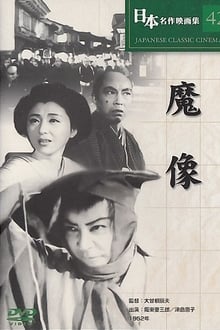
The second remake of a film first produced in 1930 with another actor and filmed again in 1936 with Tsumasaburo Bando, the star of this version, the film has the 'feel' and style of samurai films made in the late 1920s and early 1930s, the golden age of period films. The story line - that of a man at odds with society - was popular at the time. The film's premise is basically one of class conflict: of the four classes in a rigidly stratified society between 1600 and 1868, the merchant was traditionally placed below the samurai, farmer, and artisan; but when, from the eighteenth century onward, the money economy enabled this class to control the economy of Japan, the non-productive samurai class made every effort to put the merchant class in its place. "Kyonosuke Kamio, a samurai, incurs the wrath and contempt of his peers for having married the daughter of a wealthy merchant and for genuinely loving her. But Kamio is also estranged from his peers in the shogun's treasury for their crooked manipulation and speculations which fatten their purses but cause hardship among the common people. Lashed into action by the taunts of his cohorts, Kamio finally bolts the group, vows vengeance on them, and throws in his lot with Ibara, a sympathetic chivalrous commoner. "Kamio's manic, mocking laugh in the faces of his tormentors echoes the laughter of many similar characters in the films of that period, particularly as they were played by Bando, who made a career playing the type that Toshiro Mifune would later play in the Kurosawa films. "In his double roles, Bando skillfully plays the vengeful Kamio and the humorous, relaxed Ibara. Isuzu Yamada, the perfect period actress, plays Ibara's tough but playful wife.
Frank T. Motofuji©